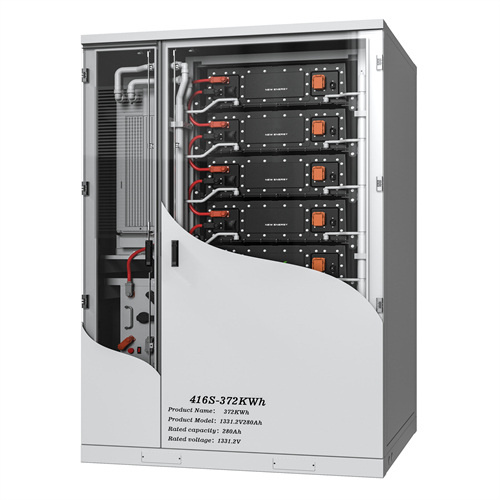Norbornadiene solar energy storage Ghana

Bis‐ and Tris‐norbornadienes with High Energy
In search for novel efficient energy storage systems, aryl-linked bis- and tris-norbornadienes were synthesized with promising potential for molecular solar thermal energy storage (MOST) applications.

Liquid Norbornadiene Photoswitches for Solar
Due to high global energy demands, there is a great need for development of technologies for exploiting and storing solar energy. Closed cycle systems for storage of solar energy have been suggested, based on

Norbornadiene-quadricyclane as an abiotic system for the storage
@misc{etde_21257145, title = {Norbornadiene-quadricyclane as an abiotic system for the storage of solar energy} author = {Dubonosov, Alexander D, Bren, Vladimir A, and Chernoivanov, V A} abstractNote = {Data on the valence isomerisation of norbornadiene and its derivatives into the corresponding quadricyclanes published between 1990 and 2001 are

Push-Pull Bis-Norbornadienes for Solar Thermal Energy Storage
Promising properties for high-performance MOST applications are demonstrated, such as high absorption onsets reaching 539 nm, and energy densities of 379 kJ/kg, while still maintaining

Solar Energy Storage by Molecular Norbornadiene
1. Introduction. One of the main challenges in the world today is a sustainable energy production. In 2017, 85% of world energy production was fossil fuel derived, 1 and environmental impacts necessitates the global community to seek cleaner alternatives. 2 Renewable green energies derived from solar power, wind, or hydroelectric sources are the

The Norbornadiene/Quadricyclane Pair as Molecular Solar Thermal Energy
For the transition to renewable energy sources, novel energy storage materials are more important than ever. This review addresses so‐called molecular solar thermal (MOST) systems, which appear

(PDF) Norbornadiene‐Quadricyclane Photoswitches with Enhanced Solar
most important factors for efficient solar energy storage are the onset of absorption and the quantum yield, so conjugating with higher molecular weight units can improve solar spectrum

Monoaryl‐Substituted Norbornadiene Photoswitches as Molecular Solar
The energy storage densities are, as expected, lower than those of the parent norbornadiene (1 a). 12 This observation can be explained by the inverse correlation between the molecular weight and the energy storage density. 15, 16 In agreement with this relationship, the comparison of 2-aryl-norbornadiens with 2,3-disubstituted norbornadienes

Liquid Norbornadiene Photoswitches for Solar Energy Storage
Due to high global energy demands, there is a great need for development of technologies for exploiting and storing solar energy. Closed cycle systems for storage of solar energy have been suggested, based on absorption of photons in photoresponsive molecules, followed by on-demand release of thermal energy. These materials are called solar thermal

Two-way photoswitching norbornadiene derivatives for solar energy storage
Molecular photoswitches of norbornadiene (NBD) derivatives have been effectively applied in molecular solar-thermal energy storage (MOST) by photoisomerization of NBD to a quadricyclane (QC) state.

Norbornadiene-quadricyclane — an effective molecular
Norbornadiene-quadricyclane — an effective molecular system for the storage of solar energy V A Bren'', A D Dubonosov, V I Minkin, V A Chernoivanov Scientific-Research Institute of Physical and Organic Chemistry, Rostov State University ABSTRACT. The results of studies on intramolecular interconversions in systems of norbornadiene

Unraveling factors leading to efficient
The potential of the NBD-R 2 compounds in devices is also explored, demonstrating a solar energy storage efficiency of up to 0.2%. Finally, we show how the insights gained in this study can be used to identify

Engineering of Norbornadiene/Quadricyclane Photoswitches for Molecular
Moreover, we have demonstrated their function in laboratory-scale test devices for solar energy harnessing, storage, and release.This Account describes the most impactful

Multichromophoric Photoswitches for Solar Energy Storage: from
The ever-increasing global demands for energy supply and storage have led to numerous research efforts into finding and developing renewable energy technologies. Molecular solar thermal energy

A new approach exploiting thermally activated delayed
We propose a new concept exploiting thermally activated delayed fluorescence (TADF) molecules as photosensitizers, storage units and signal transducers to harness solar thermal energy. Molecular

PHOTOSENSITIZED ISOMERIZATION OF NORBORNADIENE
promising reactions for the permanent storage of solar energy in the form of chemical energy14) (Scheme 1). Its energy storage capacity, as much as 1190J/g,30) makes this substance attractive for this purpose. There are, however, several difficulties which should be overcome to realize a practical energy-storage system from this reaction

Bis‐ and Tris‐norbornadienes with High Energy Densities for
Abstract Molecular solar thermal energy storage (MOST) systems can convert, store and release solar energy in chemical bonds, i.e., as chemical energy. that the bis- and tris-norbornadiene derivatives have higher energy densities than the mono-norbornadienes, 14 the actually obtained values of up to 734 kJ/kg are exceptionally high and

Triplet-Sensitized Switching of High-Energy-Density
Norbornadiene-based photoswitches have emerged as promising candidates for harnessing and storing solar energy, holding great promise as a viable solution to meet the growing energy demands. Triplet-Sensitized Switching of High-Energy-Density Norbornadienes for Molecular Solar Thermal Energy Storage with Visible Light Angew Chem Int Ed Engl

Unraveling Factors Leading to Efficient Norbornadiene
Photochromic molecules are systems that undergo a photoisomerization to high-energy isomers and are attractive for the storage of solar energy in a closed-energy cycle, for example, in molecular

Norbornadiene-based photoswitches with exceptional combination of solar
Norbornadiene-quadricyclane (NBD-QC) photo-switches are candidates for applications in solar thermal energy storage. Functionally they rely on an intramolecular [2+2]

Low Molecular Weight Norbornadiene Derivatives for Molecular Solar
Molecular solar thermal energy storage systems are based on molecular switches that reversibly convert solar energy into chemical energy. Here we report on the synthesis, characterization and

Push-Pull Bis-Norbornadienes for Solar Thermal Energy
This shows that the precise design of the dimer structure, in particular by adding electron-donating groups to a phenyl linker in norbornadiene dimers, can greatly enhance the solar thermal energy storage properties of a

The Norbornadiene/Quadricyclane Pair as Molecular
In this review, we illustrated the evolution from the first discovery of the photoswitchable nature of norbornadiene as route for energy storage to the sophisticated molecular design of numerous derivatives with

Low Molecular Weight Norbornadiene Derivatives for Molecular Solar
Molecular solar-thermal energy storage systems are based on molecular switches that reversibly convert solar energy into chemical energy. Herein, we report the synthesis, characterization, and computational evaluation of a series of low molecular weight (193-260 g/mol) norbornadiene-quadricyclane systems. The molecules feature cyano acceptor

Prospects of Improving Molecular Solar Energy Storage of the
Molecular solar thermal energy storage (MOST) systems based on photochromic molecules that undergo photoisomerization to high‐energy isomers are attractive for storage of solar energy in a

Low Molecular Weight Norbornadiene Derivatives for
Molecular solar-thermal energy storage systems are based on molecular switches that reversibly convert solar energy into chemical energy. Herein, we report the synthesis, characterization, and computational

3 FAQs about [Norbornadiene solar energy storage Ghana]
Is norbornadiene a molecular energy storage system?
Due to its properties, the molecule pair norbornadiene (NBD) and quadricyclane (QC) appears auspicious concerning its feasibility as MOST energy storage system (see Section 1.2). MOST systems can also be considered as molecular photoswitches; 9 in this context, various systems are known in literature (see Scheme 1).
What is the absorption onset of unsubstituted norbornadiene 1?
The absorption onset of unsubstituted norbornadiene 1 is 267 nm, but since the intensity of solar radiation below around 300 nm is very low at sea level, norbornadiene is essentially inert to sunlight. To prepare quadricyclane, high-power ultraviolet lamps are employed, typically in the presence of a photosensitizer.
Which Norbornadiene is best suited for solar spectrum match?
The most red-shifted absorption was observed for 4 d, with a maximum at 398 nm and an onset at 456 nm. Thus, among the synthesized compounds, 4 d is the norbornadiene that best meets the requirements of solar spectrum match.
Related Contents
- Vanuatu norbornadiene solar energy storage
- Solar energy storage system price Åland
- Energy storage solar panels Kuwait
- Energy storage system solar Macao
- Uruguay energy storage for solar power
- Belarus solar energy storage future 2024
- Solar energy companies uae Ghana
- Solar energy storage types Georgia
- Smart solar energy storage Sint Maarten
- Uganda solar energy storage solutions
- Solar energy storage companies Mauritius
- The Gambia storage for solar energy